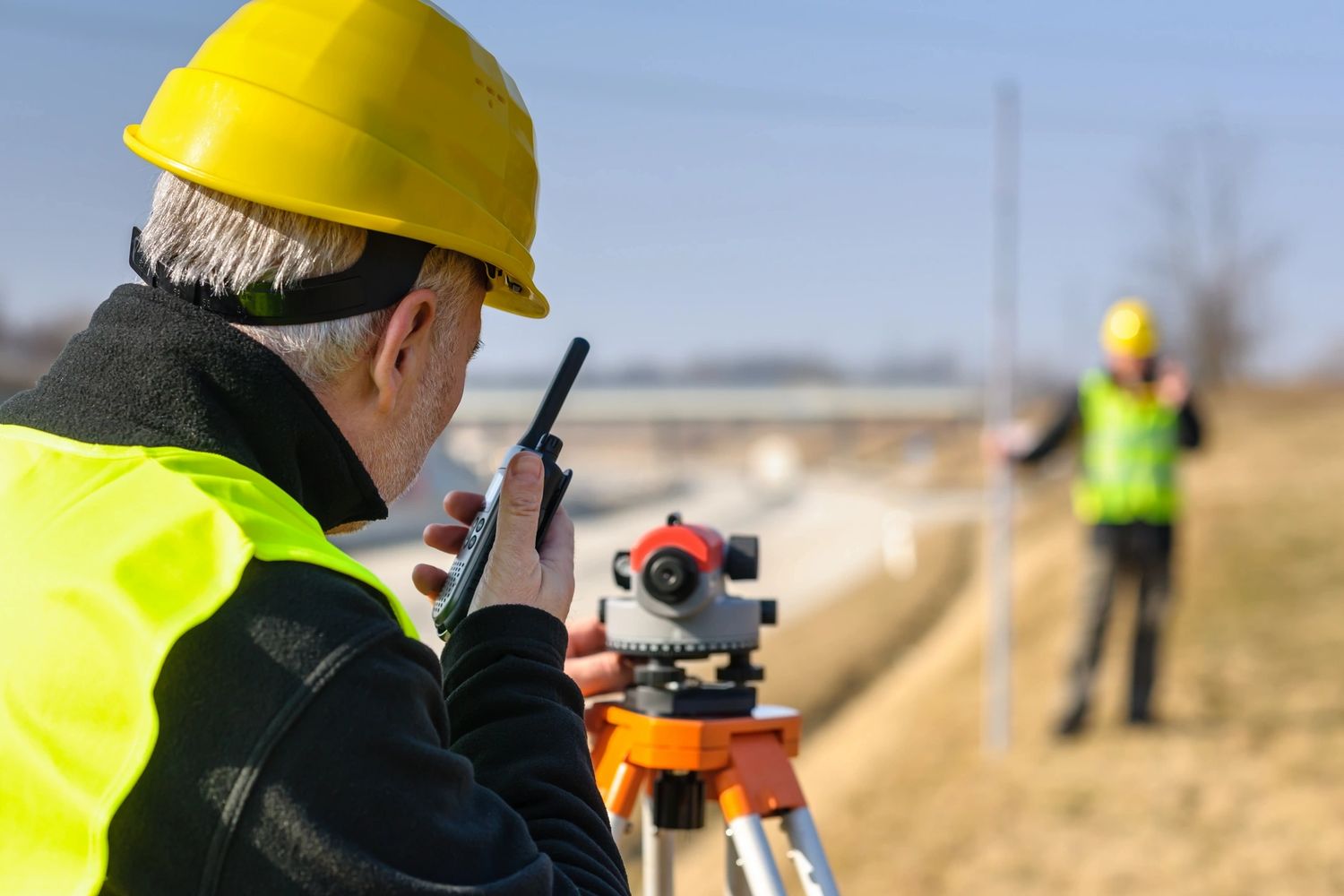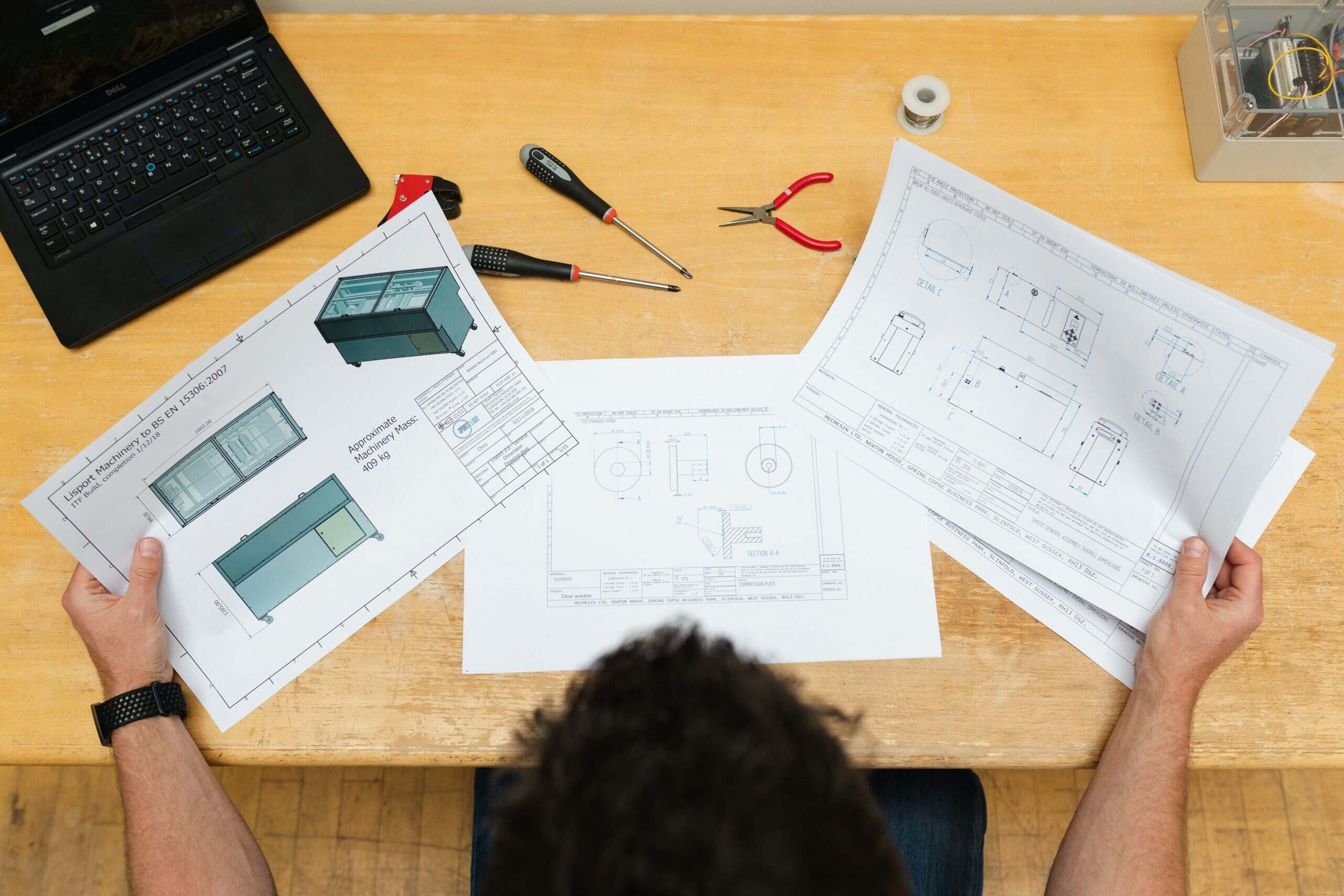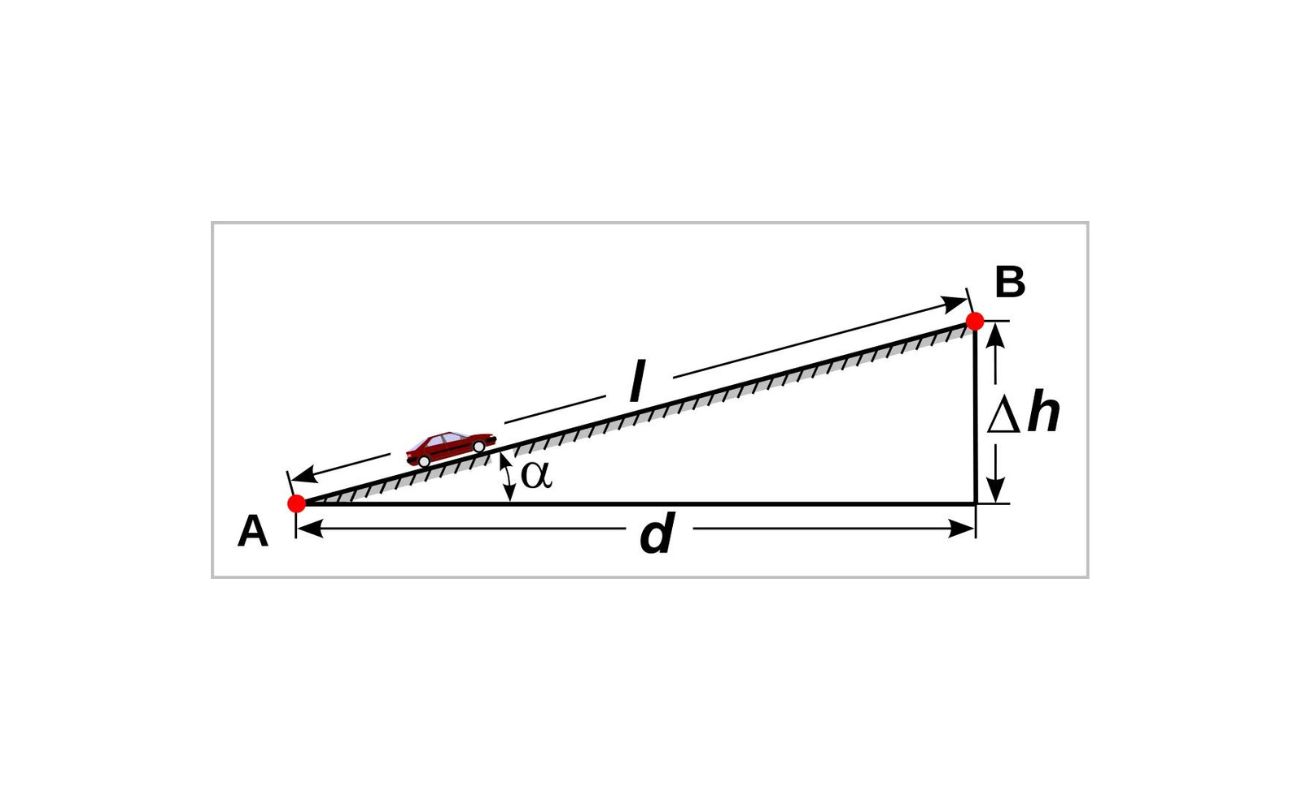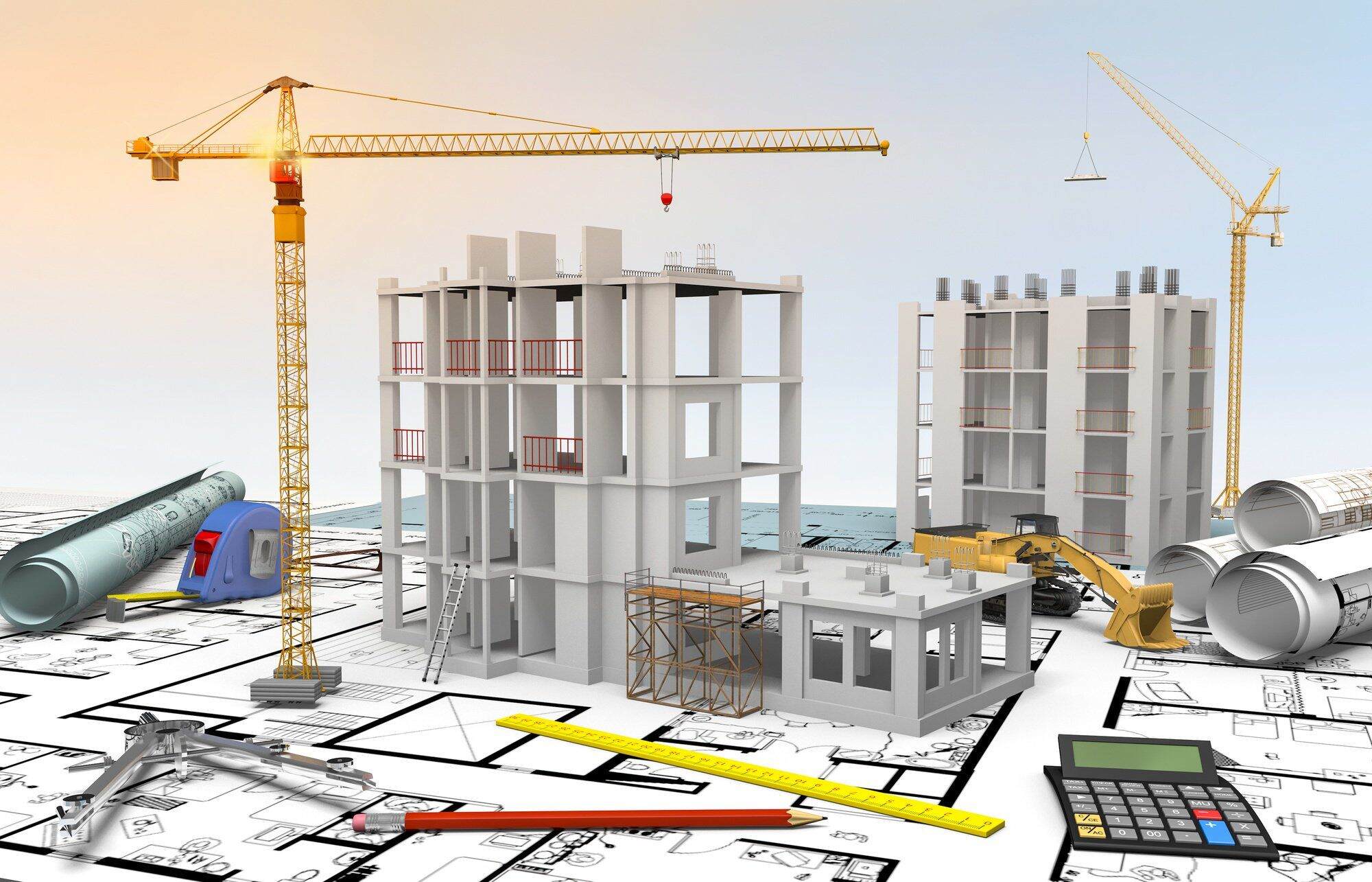Home>diy>Planning & Engineering>What Is Geomatics In Civil Engineering


Planning & Engineering
What Is Geomatics In Civil Engineering
Modified: January 4, 2024
Learn about geomatics in civil engineering, including its role in planning and engineering projects. Explore the benefits and applications of this important field.
(Many of the links in this article redirect to a specific reviewed product. Your purchase of these products through affiliate links helps to generate commission for Storables.com, at no extra cost. Learn more)
Introduction
In the ever-evolving world of civil engineering, the field of geomatics has emerged as a pivotal component, playing a crucial role in the planning, design, and implementation of various projects. Geomatics, also known as geospatial engineering or geoinformatics, is the art and science of acquiring, managing, analyzing, and visualizing geographic data. This interdisciplinary field combines elements of surveying, GIS (Geographic Information Systems), remote sensing, and other geospatial technologies to provide engineers with accurate and comprehensive data for decision-making processes.
In the realm of civil engineering, geomatics serves as a powerful tool that enables professionals to gather essential information about the physical characteristics and topography of the land. This information helps in the design and construction of infrastructure projects, including roads, bridges, buildings, and utility systems. By integrating geospatial data into their workflow, civil engineers are better equipped to assess site suitability, optimize project timelines, minimize risks, and ensure the overall success of their endeavors.
The significance of geomatics in civil engineering can be seen through its wide-ranging applications. This article explores the definition of geomatics, the role it plays, the techniques and tools employed, as well as the benefits and challenges associated with its implementation in civil engineering projects.
Key Takeaways:
- Geomatics revolutionizes civil engineering by providing accurate spatial data for informed decision-making, enhancing project visualization, and promoting sustainable development through efficient resource utilization.
- Despite challenges, geomatics offers numerous benefits such as accurate data acquisition, improved planning and design, and enhanced project collaboration, making it a valuable tool for civil engineering projects.
Read more: What Is Civil Engineering Major
Definition of Geomatics
Geomatics, also referred to as geospatial engineering or geoinformatics, is a multidisciplinary field that encompasses the collection, analysis, interpretation, and visualization of geographic data. It is the intersection of various disciplines such as surveying, GIS (Geographic Information Systems), remote sensing, cartography, and spatial analysis.
In its essence, geomatics involves capturing spatial data using advanced measurement technologies such as satellite-based positioning systems, laser scanning, and aerial photogrammetry. This data is then processed, organized, and integrated with non-spatial attributes to generate accurate digital representations of the Earth’s surface and its features.
Geomatics provides a holistic approach to understanding the spatial relationship between objects, environments, and phenomena on the Earth’s surface. It involves the analysis of the three-dimensional characteristics of the land, including its elevation, terrain features, and natural resources. This comprehensive understanding of the Earth’s spatial attributes enables civil engineers to make informed decisions throughout the project lifecycle.
The field of geomatics is driven by the need for accurate spatial information in various sectors, including urban planning, land administration, environmental management, and infrastructure development. It plays a crucial role in supporting decision-making processes, enhancing spatial awareness, and facilitating effective communication among stakeholders involved in civil engineering projects.
Overall, geomatics is a fundamental discipline in the field of civil engineering, providing the tools and methodologies necessary for acquiring, analyzing, and visualizing spatial data. It serves as a bridge between the physical world and the digital representation of our environment, enabling engineers to better understand and navigate the complexities of the built environment.
Role of Geomatics in Civil Engineering
Geomatics plays a critical role in various stages of civil engineering projects, from the initial planning and design phase to construction and maintenance. It provides civil engineers with the necessary tools and techniques to gather, analyze, and interpret spatial data for informed decision-making. Here are some key roles that geomatics fulfills in civil engineering:
1. Site Selection and Assessment: Geomatics helps civil engineers in the site selection process by providing accurate spatial information about the terrain, land use patterns, infrastructure networks, and environmental factors. This data enables engineers to evaluate the feasibility and suitability of a site for a particular project, taking into account factors such as slope stability, drainage, and proximity to utilities.
2. Surveying and Mapping: Geomatics is fundamental to the surveying process, which involves the measurement and mapping of land features. Geospatial technologies like GPS (Global Positioning System) and total stations enable civil engineers to collect precise data on boundaries, contours, and elevations of a site. This information forms the foundation for creating accurate topographic maps and 3D models, essential for designing infrastructure and identifying potential construction challenges.
3. Utility and Infrastructure Planning: Geomatics plays a crucial role in the planning and design of utility systems such as water supply, sewage, and electrical networks. It helps civil engineers to assess the existing infrastructure, identify potential conflicts or constraints, and optimize the layout for efficient and sustainable development. Geospatial data also aids in determining the most suitable routes for transportation networks, minimizing environmental impact and cost.
4. Construction and Monitoring: During the construction phase, geomatics supports civil engineers in monitoring the progress and quality of the project. Through techniques like laser scanning and aerial imagery, engineers can compare the as-built conditions with the design plans, ensuring accurate execution. Geospatial monitoring tools also enable engineers to detect deformations, settlements, and other structural changes, ensuring the safety and integrity of the built infrastructure.
5. Asset Management and Maintenance: Geomatics assists civil engineers in the long-term management and maintenance of infrastructure assets. By creating detailed geospatial databases and utilizing GIS techniques, engineers can track and manage the condition of roads, bridges, buildings, and other structures. This data supports decision-making for repairs, upgrades, and routine maintenance, enhancing the lifespan and functionality of the infrastructure.
In summary, geomatics is a crucial component of the civil engineering process, providing the necessary spatial information and analytical tools for effective planning, design, construction, and maintenance of infrastructure projects. It enables engineers to make informed decisions, optimize resources, and ensure the overall success and sustainability of civil engineering ventures.
Applications of Geomatics in Civil Engineering
The integration of geomatics in civil engineering has revolutionized the industry by providing engineers with advanced tools and techniques to enhance the efficiency, accuracy, and sustainability of their projects. Here are some key applications of geomatics in civil engineering:
1. Land Surveying and Mapping: Geomatics plays a pivotal role in land surveying, providing precise measurement and mapping of land boundaries, contours, and features. This information is essential for site selection, topographic mapping, and designing infrastructure projects.
2. Geographic Information Systems (GIS): GIS technology enables civil engineers to analyze and visualize complex spatial data, integrating information from diverse sources. GIS allows engineers to understand the relationships between various elements in a project, such as land use patterns, infrastructure networks, and environmental factors.
3. Remote Sensing: Remote sensing techniques, including aerial photography and satellite imagery, provide valuable data for civil engineering projects. Engineers can use remote sensing data to assess the vegetation cover, monitor land use changes, and detect potential hazards or environmental impacts.
4. Geospatial Analysis: Geomatics enables engineers to perform geospatial analysis to evaluate the suitability and impact of proposed developments. This includes analyzing slope stability, flood risk assessment, and environmental impact assessments.
5. Construction Monitoring: Geomatics techniques such as laser scanning and photogrammetry offer real-time monitoring and accurate documentation of construction progress. This helps in quality control, identifying potential issues, and comparing the as-built conditions with the design plans.
6. Infrastructure Management: Geomatics plays a vital role in the management and maintenance of infrastructure assets throughout their lifecycle. Engineers can utilize geospatial databases and asset management systems to track and assess the condition of roads, bridges, and other structures, facilitating better decision-making for repairs, upgrades, and maintenance.
7. Geotechnical Engineering: Geomatics provides valuable data for geotechnical engineering, including soil analysis, slope stability analysis, and foundation design. The integration of geomatics with geotechnical engineering contributes to better understanding and mitigating potential risks and hazards.
8. Urban Planning and Development: Geomatics aids in urban planning by providing critical data for analyzing land-use patterns, transportation networks, and infrastructure planning. It assists engineers in designing sustainable and efficient cities, optimizing project locations, and minimizing environmental impacts.
9. Environmental Impact Assessment: Geomatics supports environmental impact assessment by providing the necessary data to identify potential impacts on the natural environment. This includes assessing the ecological systems, analyzing air and water quality, and determining the potential effects of proposed developments.
By leveraging geomatics, civil engineers can harness spatial information and advanced technologies to improve project outcomes, minimize risks, and ensure sustainable development. The wide range of applications demonstrates the versatility and indispensability of geomatics in the field of civil engineering.
Geomatics in civil engineering involves the use of technology such as GPS, GIS, and remote sensing to collect, analyze, and manage spatial data for various infrastructure projects.
Techniques and Tools Used in Geomatics
Geomatics utilizes a variety of techniques and tools to acquire, analyze, and visualize spatial data. These advanced technologies play a crucial role in providing accurate and comprehensive information for civil engineering projects. Here are some commonly used techniques and tools in geomatics:
1. Global Positioning System (GPS): GPS is a satellite-based positioning system that provides precise location information. It uses a network of satellites to determine the position of a receiver on the Earth’s surface. GPS is widely used in land surveying, mapping, and navigation, allowing civil engineers to collect accurate and georeferenced data.
2. Total Station: A total station is an electronic instrument used in surveying and construction projects. It combines a distance meter, an electronic theodolite, and a data recorder into a single device. Total stations are capable of measuring distances, angles, and elevations, making them essential tools for land surveying and topographic mapping.
3. Laser Scanning: Laser scanning, also known as LiDAR (Light Detection and Ranging), is a technology that uses laser beams to measure and capture the shape and contours of objects and surfaces. It provides highly detailed and accurate 3D data, which is valuable for creating digital terrain models, as-built documentation, and architectural modeling.
4. Photogrammetry: Photogrammetry is the science of capturing measurements from photographs. It involves the analysis of aerial or ground-based photographs to extract accurate information about the shape, size, and position of objects and landscapes. Photogrammetry is used in land surveying, mapping, and creating 3D models of the built environment.
5. Remote Sensing: Remote sensing refers to the collection of data about the Earth’s surface from a distance. It involves the use of satellite imagery, aerial photography, and sensors to gather information about land cover, vegetation, and other environmental factors. Remote sensing is extensively used in environmental monitoring, land use planning, and disaster management.
6. Geographic Information Systems (GIS): GIS technology is used to capture, store, analyze, and visualize geospatial data. It allows civil engineers to integrate multiple layers of information, such as aerial imagery, topographic maps, and infrastructure networks, into a single platform. GIS enables engineers to perform spatial analysis and make informed decisions based on the relationships between different geographic features.
7. Mobile Mapping Systems: Mobile mapping systems utilize various technologies, including GPS, laser scanning, and cameras, mounted on a vehicle or handheld equipment. These systems collect geospatial data as they move through a location, capturing information in real-time. Mobile mapping is an efficient method for generating accurate street-level imagery, assessing infrastructure conditions, and conducting asset inventories.
8. Digital Terrain Modeling: Digital Terrain Models (DTMs) are high-resolution digital representations of the Earth’s surface. Civil engineers use DTMs to analyze terrain characteristics, assess surface profiles, and evaluate drainage patterns. DTMs are essential for land development, road design, and slope stability analysis.
By harnessing these techniques and tools, geomatics empowers civil engineers to collect precise and reliable spatial data. This data serves as a foundation for informed decision-making, efficient planning, and successful implementation of civil engineering projects.
Read more: What Is A Civil Engineering Technician
Benefits of Geomatics in Civil Engineering
Geomatics has revolutionized the field of civil engineering by providing numerous benefits that enhance project efficiency, accuracy, and sustainability. Here are some key advantages of integrating geomatics into civil engineering practices:
1. Accurate Data Acquisition: Geomatics enables civil engineers to capture highly accurate and precise spatial data using techniques such as GPS, laser scanning, and photogrammetry. This accurate data serves as the foundation for informed decision-making, resulting in more precise designs, reduced errors, and improved project outcomes.
2. Improved Planning and Design: Geomatics provides engineers with comprehensive and up-to-date spatial information, enabling them to make informed decisions during the planning and design stages of a project. This information helps in optimizing site selection, evaluating potential impacts, and ensuring the most efficient use of resources.
3. Enhanced Project Visualization: Geomatics allows civil engineers to visualize project sites in 2D and 3D models, providing a better understanding of the terrain, infrastructure, and environmental factors. This visualization aids in communication among project stakeholders and improves the overall design process.
4. Efficient Construction Processes: By utilizing geomatics techniques, civil engineers can accurately monitor construction progress, detect potential issues in real-time, and make timely adjustments. This improves construction efficiency, minimizes delays, and reduces overall project costs.
5. Sustainable Development: Geomatics plays a vital role in promoting sustainable development by providing data to analyze the environmental impact of construction projects. By assessing factors such as land cover, water resources, and ecological systems, civil engineers can incorporate sustainable practices into their designs, mitigate environmental impacts, and promote long-term sustainability.
6. Improved Asset Management: Geomatics supports the management and maintenance of infrastructure assets by providing accurate data about their condition and performance. Civil engineers can utilize geospatial databases and GIS technology to track asset deterioration, plan maintenance activities, and make informed decisions regarding repairs and upgrades.
7. Better Project Collaboration: Geomatics enhances collaboration among project stakeholders by providing a common platform to access and analyze spatial data. By integrating data from various sources and disciplines, geomatics enables effective communication, coordination, and collaboration among engineers, architects, planners, and other professionals involved in the project.
8. Improved Safety and Risk Management: Geomatics techniques facilitate the identification and analysis of potential risks and hazards in civil engineering projects. By assessing factors such as slope stability, flood risk, and transportation networks, engineers can develop appropriate mitigation strategies and ensure the safety of both workers and the public.
In summary, geomatics provides numerous benefits to civil engineering projects, ranging from accurate data acquisition to improved planning, design, and construction processes. By leveraging geospatial technologies and techniques, civil engineers can enhance project outcomes, optimize resources, and contribute to sustainable and resilient infrastructure development.
Challenges in Implementing Geomatics in Civil Engineering Projects
While geomatics offers numerous benefits in civil engineering projects, its implementation can present certain challenges. These challenges arise from various factors, including technical limitations, data management issues, and organizational considerations. Here are some of the common challenges faced in implementing geomatics in civil engineering projects:
1. Technological Complexity: Geomatics involves using advanced technologies and techniques that can be complex and require specialized training. Civil engineering teams may need to invest in training and personnel with technical expertise to effectively implement and utilize geospatial technologies.
2. Data Collection and Integration: The collection, integration, and management of large volumes of geospatial data can be challenging. Different data sources may have varying formats, scales, and accuracies, making it crucial to effectively integrate and analyze the data while ensuring its quality and reliability.
3. Cost and Resource Constraints: Geomatics technologies can be expensive, requiring investment in hardware, software, and specialized equipment. Additionally, implementing geomatics may require additional labor resources and the cost of data acquisition and processing, which can pose financial constraints, especially for smaller-scale projects or organizations.
4. Data Privacy and Security: Geomatics involves the collection and storage of spatial data, which may contain sensitive information. Ensuring data privacy and security, including protection against unauthorized access, data breaches, and hacking, is essential but can be challenging due to the complexity of data management systems.
5. Data Accuracy and Quality: The accuracy and quality of geospatial data are crucial for reliable analysis and decision-making. Challenges such as errors in data collection, limitations of measurement technologies, and uncertainty in data processing can impact the overall accuracy and quality of the final geomatics outputs.
6. Interoperability and Standardization: Geomatics requires interoperability and standardized data formats to enable the seamless exchange and integration of data across different systems and platforms. However, the lack of consistent standards and protocols can hinder the efficient sharing and integration of geospatial data.
7. Limited Awareness and Adoption: Geomatics is a rapidly evolving field, and its potential benefits may not be fully understood by all stakeholders in civil engineering projects. Limited awareness and understanding of geomatics technologies and their applications may lead to resistance or reluctance in adopting these technologies.
8. Institutional and Organizational Readiness: Implementing geomatics in civil engineering projects may require significant changes in existing processes, workflows, and organizational structures. Overcoming resistance to change and ensuring institutional readiness, including the necessary technical infrastructure and support, can be a challenge.
Despite these challenges, the potential benefits of geomatics in civil engineering projects make it worthwhile to address and overcome these obstacles. With appropriate planning, adequate resources, and a proactive approach, the challenges associated with implementing geomatics can be mitigated, unlocking its full potential in delivering efficient, accurate, and sustainable civil engineering projects.
Conclusion
Geomatics is a powerful tool that has revolutionized the field of civil engineering. By integrating various technologies and techniques, geomatics provides accurate and comprehensive spatial data for informed decision-making throughout the project lifecycle. From site selection and assessment to construction monitoring and asset management, geomatics plays a pivotal role in enhancing project outcomes and promoting sustainable development.
The benefits of geomatics in civil engineering are numerous. It enables engineers to acquire accurate data, visualize projects more effectively, and improve planning and design processes. The use of geospatial technologies optimizes construction processes, enhances asset management, and improves safety and risk management. Geomatics also contributes to sustainable development by supporting environmental impact assessments and promoting efficient resource utilization.
However, the implementation of geomatics in civil engineering projects is not without challenges. Technical complexity, data collection and integration issues, cost constraints, and data privacy concerns can pose obstacles to successful implementation. Ensuring data accuracy and quality, addressing interoperability and standardization issues, and overcoming organizational resistance are also key challenges to be addressed.
Despite these challenges, the benefits of geomatics far outweigh the obstacles. By investing in training and expertise, adopting appropriate data management strategies, and addressing the technical and organizational challenges, the full potential of geomatics can be harnessed in civil engineering projects.
Geomatics has transformed the way civil engineers approach planning, design, and construction. It has revolutionized the collection and analysis of spatial data, allowing for more informed decision-making and better project outcomes. As geomatics continues to advance, civil engineers can expect greater efficiencies, improved sustainability, and enhanced collaboration in their projects.
In conclusion, geomatics is an invaluable tool in the field of civil engineering. Embracing geospatial technologies and techniques not only enhances project outcomes but also contributes to a more sustainable and resilient built environment. By integrating geomatics into their practices, civil engineers can navigate the complexities of the modern world with accuracy, efficiency, and innovation.
Frequently Asked Questions about What Is Geomatics In Civil Engineering
Was this page helpful?
At Storables.com, we guarantee accurate and reliable information. Our content, validated by Expert Board Contributors, is crafted following stringent Editorial Policies. We're committed to providing you with well-researched, expert-backed insights for all your informational needs.















0 thoughts on “What Is Geomatics In Civil Engineering”